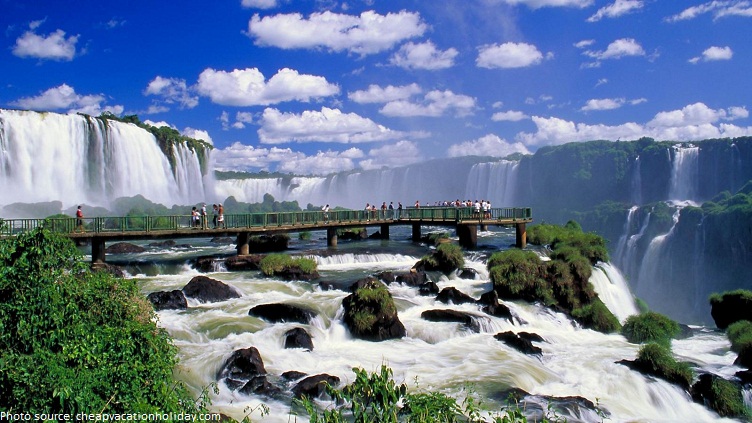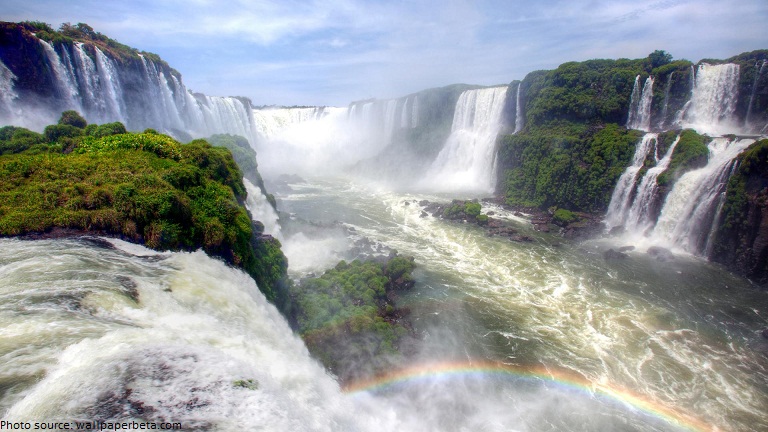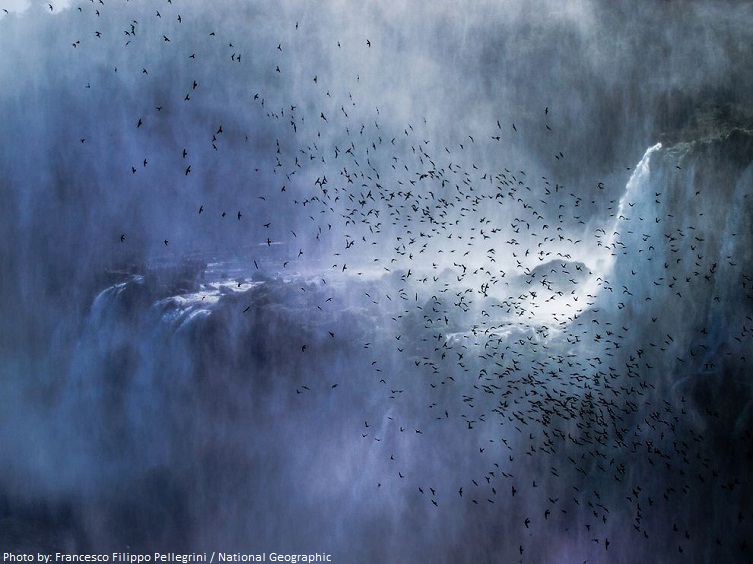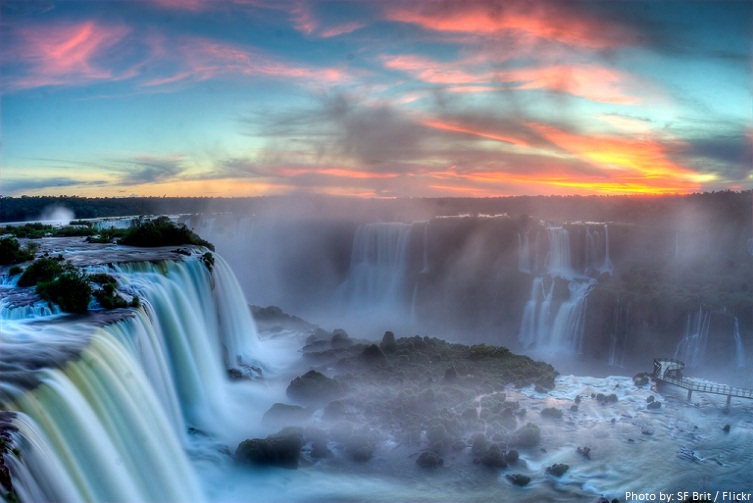Iguazu Falls are waterfalls of the Iguazu River on the border of the Argentine province of Misiones and the Brazilian state of Paraná.
When translated into English, the word Iguazu roughly means ‘big water’.
Iguazu Falls was formed as the result of a volcanic eruption. This eruption left a large crack.
According to local legend, a god planned to marry a beautiful aborigine girl named Naipí against her will. She escaped from him by fleeing with her mortal lover, Tarobá, in a hand-carved canoe on the river. The god flew into such a wild rage when he found out that he split the river into two and created all the waterfalls so that the two lovers would be condemned to an eternal fall.
The falls divide the river into the upper and lower Iguazu.
Some of the individual falls are up to 82 meters (269 ft) in height, though the majority are about 64 meters (210 ft).
The Devil’s Throat (Garganta del Diablo in Spanish or Garganta do Diabo in Portuguese), a U-shaped, 82 meters high (269 ft) , 150 meters (490 feet) wide and 700 meters (2,300 feet) long cataract, is the most impressive of all, marking the border between Argentina and Brazil. Two thirds of the falls are within Argentine territory.
The mist that rises from the falls at Devil’s Throat reaches up to 150 meters (490 feet) at times.
The actual number of waterfalls fluctuates depending on the water level and how much water is flowing. The number ranges from 150 to 300 falls at any given time.
November to March is the rainy season. At times there is as much as 450,000 cubic feet per second flowing over Iguazu Falls.
Iguazu currently has the sixth-greatest average annual flow of any waterfall in the world, following Niagara, with an average rate of 1,746 cubic meters per second (61,660 cubic feet per second).
Iguazu Falls is taller and twice as wide as Niagara Falls.
There are a species of birds called Great Dusky Swifts that often nest behind the falls. They are even seen plunging right into the falls.
There are approximately 2000 plant species in the rain forests around Iguazu Falls.
The only marsupial found outside Australia—the opossum—lives in the rain forests surrounding the falls.
Iguazu Falls was declared one of the New Seven Wonders of Nature in 2011.
Iguazu Falls was designated as one of the UNESCO World Heritage Site in 1984.
Álvar Núñez Cabeza de Vaca was a Spanish explorer who was appointed governor of Rio de la Plata, a colony in South America which comprised parts of Argentina, Paraguay, and Uruguay. In 1541, Cabeza de Vaca led an expedition through the south of present-day Brazil to Asuncion, the capital of Rio de la Plata. On the way, he became the first European to discover the Iguazu Falls.
Eleanor Roosevelt, former President Roosevelt’s wife visited the falls. She exclaimed, “Poor Niagara,’ when she first laid eyes on Iguazu Falls.
In the winter the water levels are at their lowest, and in the summer it is extremely humid and hot, which makes the spring and fall the best times to visit.




